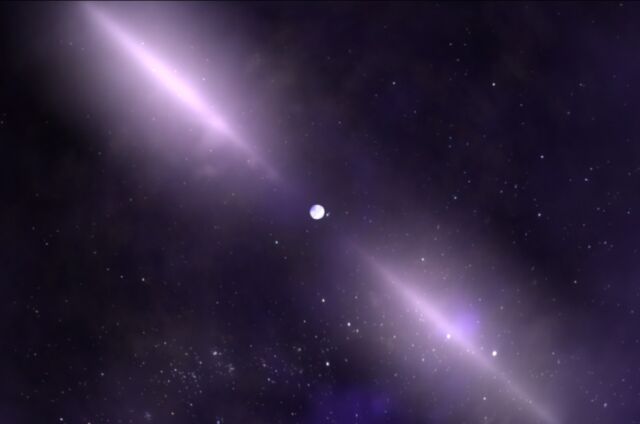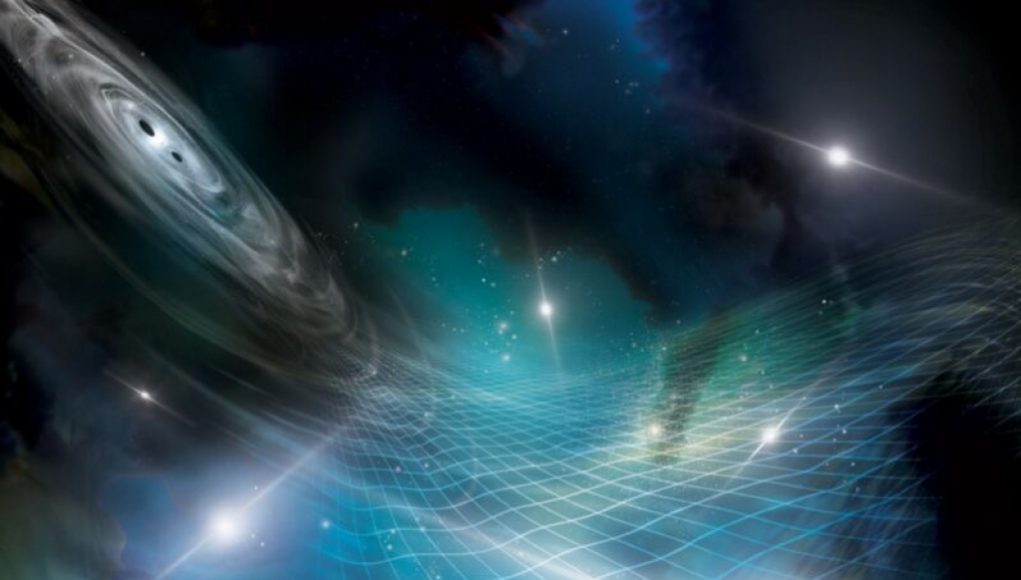Gravitational waves, the ripples in spacetime predicted by Albert Einstein’s general theory of relativity, were first detected in 2015. However, the corresponding low-frequency gravitational wave background, which is like a “hum” of gravitational waves, has been more difficult to find. But now, the North American Nanohertz Observatory for Gravitational Waves (NANOGrav) has announced the first evidence of this gravitational wave background. The results and analyses are described in several new papers published in The Astrophysical Journal Letters.
The collaboration describes their results as strong evidence of the expected gravitational wave background, although they stop short of claiming outright detection. According to NANOGrav chair Stephen Taylor of Vanderbilt University, “In our statistical analyses, there’s a less than 1-in-1,000 chance of nature giving our results without gravitational waves being present.”
LIGO, which detects gravitational waves using laser interferometry, focuses on higher frequencies. NANOGrav, on the other hand, is sensitive to much lower frequencies and acts as a galaxy-sized gravitational wave antenna. The two approaches are complementary, with NANOGrav looking for different frequencies of gravitational waves.
Advertisement

The roots of NANOGrav date back to the 1970s when scientists explored the possibility of using the Voyager mission to detect changes in signal arrival times. In the 1980s, the idea of using pulsars as “cosmic clocks” emerged. Pulsars are fast-spinning neutron stars that emit radiation in a sweeping beam, making them ideal for precise timing. NANOGrav takes advantage of the disruption in pulsars’ ticking caused by gravitational waves, studying the timing of signals from multiple pulsars to detect changes in Earth’s position.
NANOGrav’s first data set covered five years of observations, and more pulsars have been added since then. Although there was initial excitement when a signal resembling the gravitational wave background appeared in the 11-year data set, it turned out to be caused by Jupiter’s orbital period.
Today, the North American Nanohertz Observatory for Gravitational Waves (NANOGrav) released a global analysis of their data to date, finding evidence of gravitational wave “hum” across the entire universe. This hum, previously thought to be too faint to detect, is being described as “unexpectedly loud” by the astronomers who analyzed the data.
Gravitational waves are ripples through space-time caused by powerful events, such as when two black holes merge. Scientists have long believed that the collective hum of these millions of waves streaming across the universe should be measurable on Earth. But, until now, the signals were believed to be too faint to be detected by current technology.
However, the NANOGrav group, consisting of 45 astronomers from across the globe, compared their data over the last decade and have found evidence that is consistent with the hum of gravitational waves. The hum was found to be louder than expected in the lower frequency range of 30-100 nanohertz, and its magnitude was far greater than predicted by standard theories of cosmology.
The NANOGrav study indicates that the entire universe is filled with this gravitational wave hum and that the detected signal may represent an entire population of compact objects in the galaxy. It is believed that a large proportion of these objects are black holes, while other sources could include neutron stars and undiscovered populations of massive objects. However, further research will be necessary to confirm these assumptions.
In the future, NANOGrav aims to further investigate the nature and origin of this hum and to identify the sources of gravitational waves in the universe. The team will continue to refine their analysis using more advanced techniques, as well as combining their detection with those of other observatories to more accurately pinpoint the sources.
This discovery provides a wealth of new information about our universe and a new window through which to observe the cosmos. It is hoped that the data collected by NANOGrav will help us better understand how our universe evolved, the emergence of galaxies, and the dynamics of black holes.




















